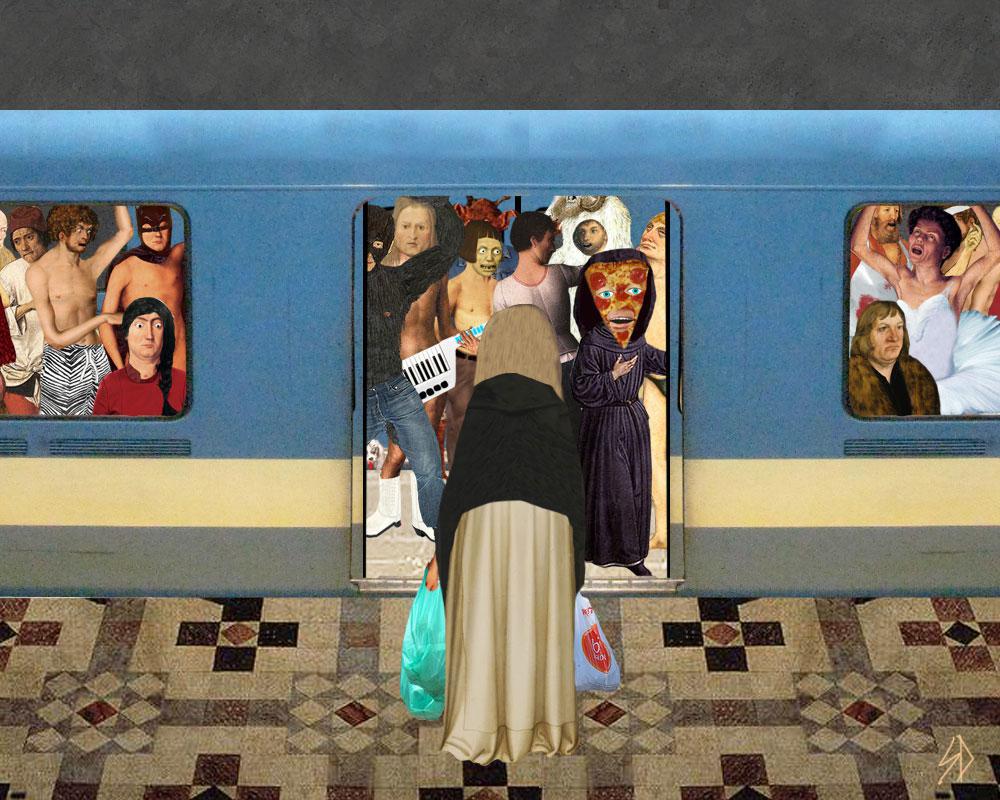In the past few years, GIF-based art has exploded around the world—and Canada is no exception. From the manic, pop-culture-based animations of Toronto’s Lorna Mills (which have been featured this past year at events in Brooklyn and Munich) to the minimal, geometric movements of Vancouver’s Nicolas Sassoon, who is included in New Orleans’ Prospect 3 this fall, Canadian creators have taken to the form in notable ways. Among them is Montrealer James Kerr, aka Scorpion Dagger, a creator of humorous, Monty-Pythonesque pieces based on historical paintings. Tomorrow, one of Kerr’s GIFs will screen at Late at Tate in London. Here, Kerr tells us more about his attraction to this new medium.
Q: GIF art has exploded online, but many still don’t regard it as a serious art form. What is your view?
A: A bit of both. I think it’s definitely a real art form. You could say people had the same conversations about photography when it first came out; it’s just a different way of expressing a thought or an image. On the other hand, most GIFs people see are of Justin Bieber, or of people doing something funny. And my stuff is obviously very silly. But there are people who are trying to take it further.
Q: Speaking of people who take it further, who are your three favourite GIF artists and why?
A: It’s hard to say. There are so many.
One would be Hateplow. In my opinion, he’s doing something completely different from everyone else, and you can tell that he’s constantly experimenting with ideas about art and the GIF.
Also, Mr. Div. I can stare at his work forever. Normally, I’m not taken by geometric shapes, but there’s something hypnotic about these GIFs that I really enjoy.
I also like Romain Laurent. I firmly believe for a GIF to be good, it has to work as an infinite loop. At times I get annoyed with GIFs that are too jumpy, or don’t loop properly. I really enjoy how Romain plays with traditional photography by giving it motion.
Q: How did you get into making GIF art?
A: I was trying to teach myself how to animate, and I was making all these really short animated videos. Some were literally two seconds long, so very soon after you hit play, you’d have to hit play again, or just loop it a lot. A friend of mine said, “Why don’t you turn it into an animated GIF?” And it made way more sense to do that, so I figured out how, and it kind of stuck with me.
Eventually, I became kind of addicted to making GIFs. I took some material from my collage practice and integrated that, as well as those animations I had been working on. Originally, my goal was to make one GIF a day for a year, but I’ve had so much fun making these things I’m coming up on my two-year anniversary in March. Mind you, I no longer make one a day!
Q: How does your practice relate to collage, or your other pre-GIF art practices?
A: Essentially, I’m using these Renaissance paintings as a palette to draw upon or cut open. So I’ll take a head from a Lucas Cranach the Elder painting, and hand from a Hans Memling painting and put those things together.
Mostly, I’m inspired by the idea of what happens to these types of paintings after a museum closes. I like the idea that the people in the paintings then get on the bus, go home, do the dishes, go to a restaurant. I like to think I’m creating a world for them outside of the museums where you would normally view these pieces of art. I like to think about what the life of these subjects might be away from the painting they are in.
Q: What is your process like? Many analog artists have a sketchbook. How do you collect and develop ideas?
A: Most of my ideas come from things that I see getting played out day to day in my life. The other day I was looking at the water cooler at the office where I work part-time, and I thought, What would it be like to have a water cooler in in the Vatican? Or in the paintings at the Vatican? So I made a GIF about that.
I also save images constantly onto my desktop. I have all these folders set up like background, bodies, church, animal. I’ll go through all these images together and then look for more that I think would be fun to paste into an animated GIF. Often an idea will change in the process of making.
I like to use the same characters over and over. I feel like it builds a relationship with the viewers [on Tumblr and elsewhere].
Q: What’s next for you?
A: Right now, I’m working with some other people to try and figure out ways in which which one could actually sell these things. There are commercial galleries interested in having a show, but the issue for them is how they make money off of this. There’s a few ideas floating around, like making analog offline GIF players, or developing a special app.
Creatively, I’d like to create more immersive digital art—like projecting GIFs at large scale or creating an interactive world that people can explore in depth. A lot of people have explored engaging art audiences outside of digital mediums, but I think that that’s where digital art needs to be going to stay relevant.
This interview has been edited and condensed.

 A still from a GIF by Montreal's James Kerr (aka Scorpion Dagger).
A still from a GIF by Montreal's James Kerr (aka Scorpion Dagger).







